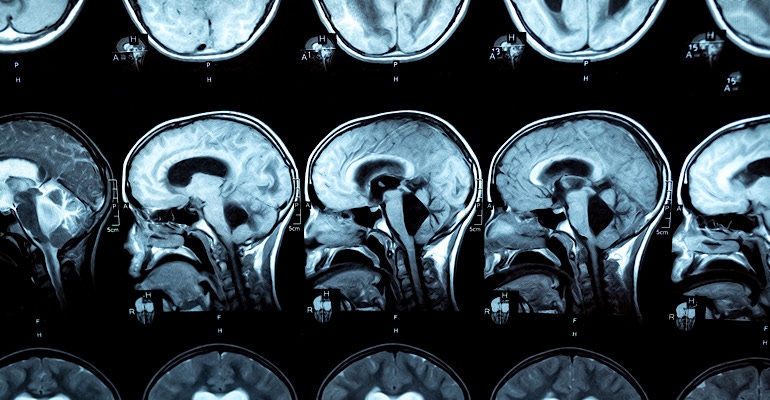Rhaeos’ FlowSense detects CSF flow in minutes, aiding in hydrocephalus management.
March 14, 2023

Fluid buildup can signal a worsening health condition or lead a patient to multiple trips to the hospital. For patients with hydrocephalus, an accumulation of cerebrospinal fluid (CSF) in the brain, fluid buildup can be dangerous and even fatal. A chronic condition, hydrocephalus, impacts about 1 million patients in the United States and requires an implanted shunt to adequately alleviate fluid buildup. However, these shunts do not always work properly, and CSF fluid can slowly increase in the brain without clear symptoms. That is until the patient’s condition worsens, and they are back in the ED or receiving yet another surgery.
Detecting flow near the clavicle
Startup Rhaeos has developed a noninvasive wireless skin patch, FlowSense, that can be used to spot-check fluid flow at the bedside. The skin patch can track flow underneath the skin, providing crucial information to clinicians monitoring patients with hydrocephalus. Placing the small device on the skin above the shunt, FlowSense can detect CSF flow in under 10 minutes, explained Anna Lisa Somera, CEO at Rhaeos. Currently, CSF flow is determined by imaging, patient history, and neurosurgery consult, a lengthy and labor-intensive process. FlowSense could alert clinicians to the absence or presence of flow quickly and inform care steps.
“If you can imagine going to the emergency room, patients who may have suspected shunt failure can exhibit nonspecific symptoms–headaches, dizziness, nausea,” Somera told MD+DI. “For a shunted hydrocephalus patient, that can be a really important event for them, and it may mean they need to go into surgery to get a shunt revision. When FlowSense is on the market, this can be used in the emergency room and help to triage the patient faster.”
“We are Launching in the hospital first since this can be used bedside without capital equipment -inpatient, outpatient, or in the emergency department,” said Somera. “It’s meant to be a quick spot check of flow.”
The device could help to avoid unnecessary care for a condition that can present or save time awaiting diagnosis. Symptoms of CSF accumulation in patients with hydrocephalus can also include stomachaches and crying in children.
Lower costs through fast assessment
Rapid monitoring of CSF flow in patients with hydrocephalus also could reduce costs and risks for patients. Spending for hydrocephalus treatment in the United States is estimated at about $2 billion each year, in part because as many as 50% of shunts fail in the first two years, and 16% of patients are readmitted to the hospital within a month of placement of a shunt.
About the Author(s)
You May Also Like


